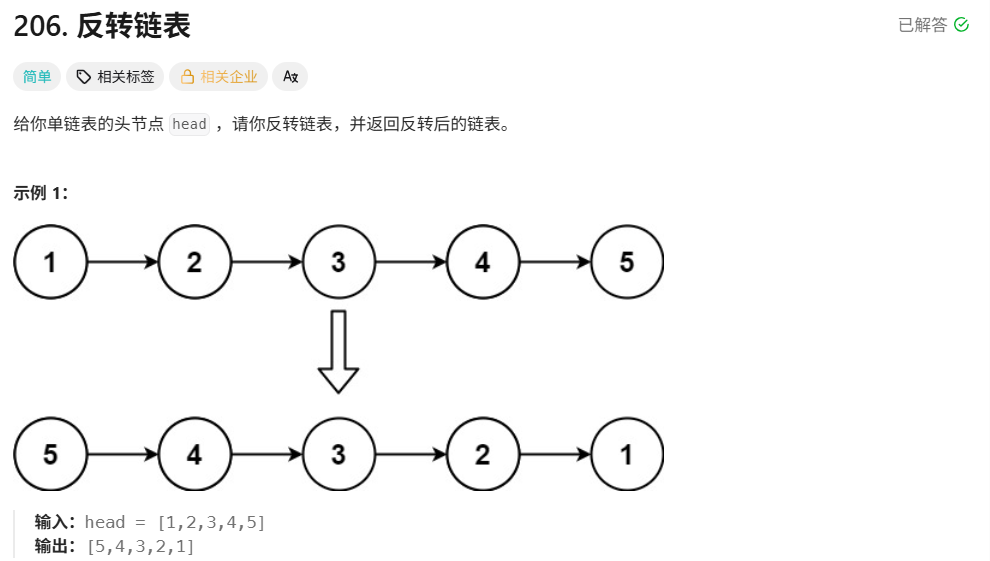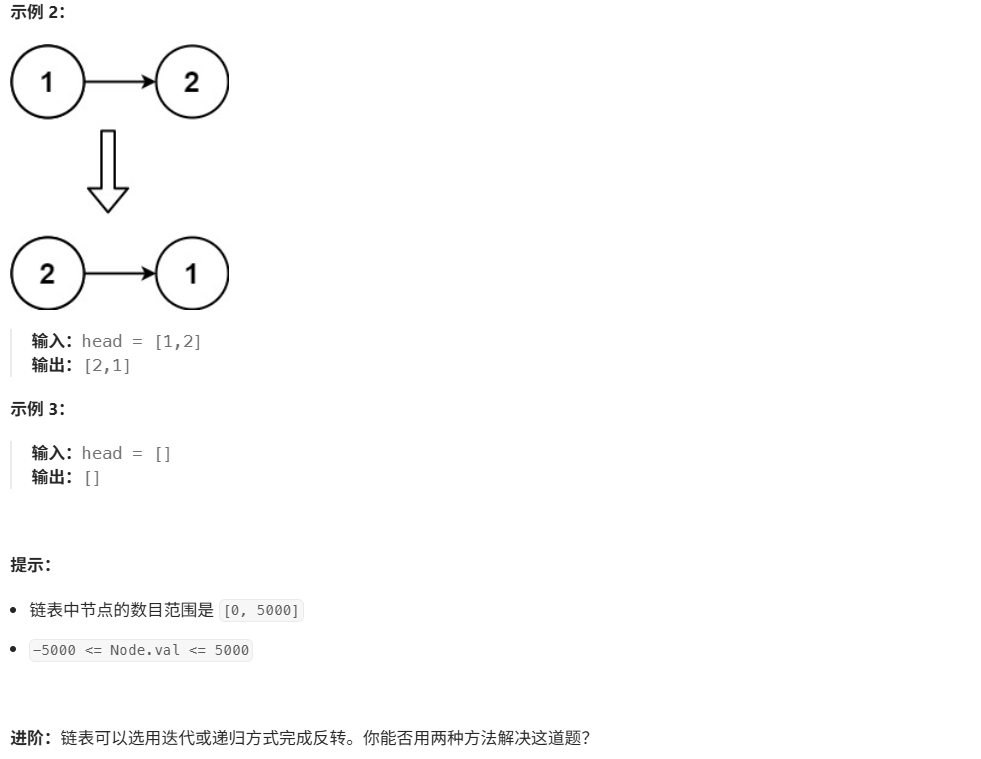原题链接:Leetcode 206. 反转链表


解法一:迭代
cpp
/**
* Definition for singly-linked list.
* struct ListNode {
* int val;
* ListNode *next;
* ListNode() : val(0), next(nullptr) {}
* ListNode(int x) : val(x), next(nullptr) {}
* ListNode(int x, ListNode *next) : val(x), next(next) {}
* };
*/
class Solution {
public:
ListNode* reverseList(ListNode* head) {
if(head==nullptr) return nullptr;
ListNode* pre = nullptr;
ListNode* now = head;
while(now){
ListNode* next = now->next;
now->next = pre;
pre = now;
now = next;
}
return pre;
}
};解法二:递归
cpp
/**
* Definition for singly-linked list.
* struct ListNode {
* int val;
* ListNode *next;
* ListNode() : val(0), next(nullptr) {}
* ListNode(int x) : val(x), next(nullptr) {}
* ListNode(int x, ListNode *next) : val(x), next(next) {}
* };
*/
class Solution {
public:
ListNode* reverseList(ListNode *head) {
if(head==nullptr || head->next==nullptr) return head;
// 「递」到链表末尾,拿到新链表的头节点(旧链表的尾节点)
ListNode* newhead = reverseList(head->next);
// 让下一个节点指向自己
head->next->next = head;
// 断开原来的指针
head->next = nullptr;
return newhead;
}
};
// 链表:1 -> 2 -> 3 -> 4 -> 5
// 递归调用顺序:
// reverseList(1)
// reverseList(2)
// reverseList(3)
// reverseList(4)
// reverseList(5)
// 5->next==nullptr,返回 5
// newhead=5,head=4, 4->next=5, 5->next = 4(反转),4->next=nullptr
// newhead=5,head=3, 3->next=4, 4->next = 3(反转),3->next=nullptr
// newhead=5,head=2, 2->next=3, 3->next = 2(反转),2->next=nullptr
// newhead=5,head=1, 1->next=2, 2->next = 1(反转),1->next=nullptr
// return newhead=5